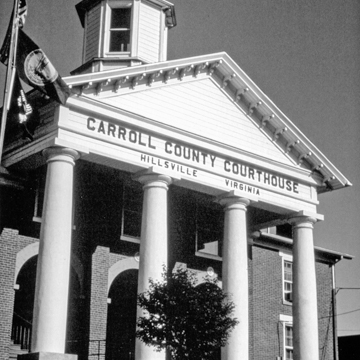Situated at the highest elevation on Main Street, the courthouse was built by local contractor Coltrane according to a design he and a three-member courthouse committee developed. The courthouse was the site of the Hillsville Massacre in March 1912, when Floyd Allen was on trial for helping his nephews escape police custody. Members of the Allen clan instigated a shoot-out with court officers, and the judge, the commonwealth's attorney, the sheriff, a juror, and a witness were killed during the melee.
The building incorporates two common, yet usually distinct, courthouse architectural elements—an arcaded front and a porticoed temple-front form with flanking wings. The arcade is embellished with stone impost blocks, stuccoed arches, and roundel-capped keystones. Though built of red brick with white columns, illustrating the persistence of tradition in the design of Virginia's court-houses, the building incorporates such Italianate details as brackets along the pedimented gable and a bracketed octagonal cupola. The courthouse was vacated in 1999 when it relocated to the new government building (CA2), and the Carroll County Historical Society and a museum now occupy the building. In 1902, a jail and records building by Bartholomew F. Smith was added to the courthouse square.

